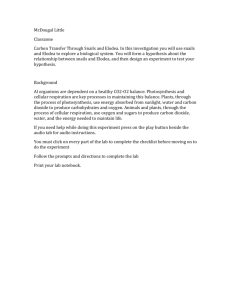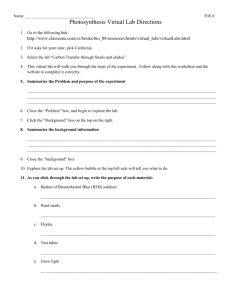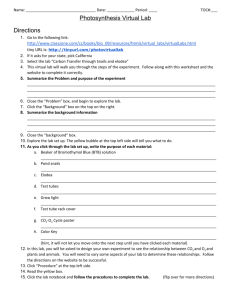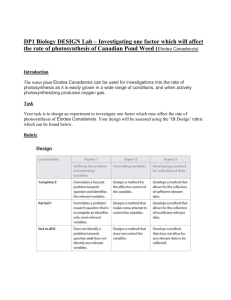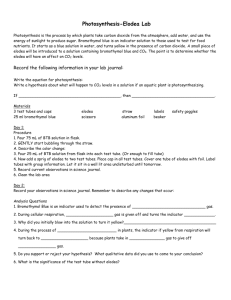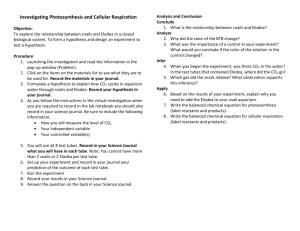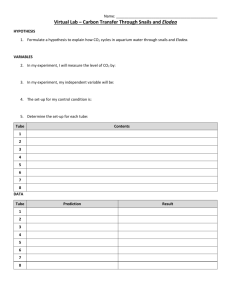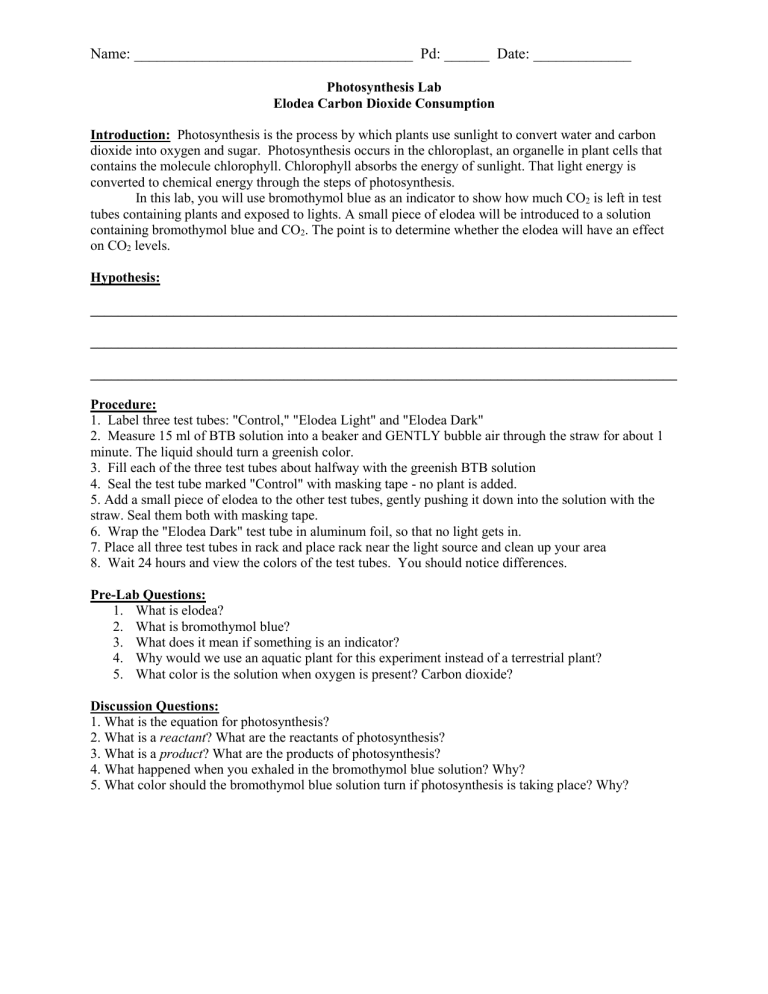
Name: _____________________________________ Pd: ______ Date: _____________ Photosynthesis Lab Elodea Carbon Dioxide Consumption Introduction: Photosynthesis is the process by which plants use sunlight to convert water and carbon dioxide into oxygen and sugar. Photosynthesis occurs in the chloroplast, an organelle in plant cells that contains the molecule chlorophyll. Chlorophyll absorbs the energy of sunlight. That light energy is converted to chemical energy through the steps of photosynthesis. In this lab, you will use bromothymol blue as an indicator to show how much CO2 is left in test tubes containing plants and exposed to lights. A small piece of elodea will be introduced to a solution containing bromothymol blue and CO2. The point is to determine whether the elodea will have an effect on CO2 levels. Hypothesis: _____________________________________________________________________________________ _____________________________________________________________________________________ _____________________________________________________________________________________ Procedure: 1. Label three test tubes: "Control," "Elodea Light" and "Elodea Dark" 2. Measure 15 ml of BTB solution into a beaker and GENTLY bubble air through the straw for about 1 minute. The liquid should turn a greenish color. 3. Fill each of the three test tubes about halfway with the greenish BTB solution 4. Seal the test tube marked "Control" with masking tape - no plant is added. 5. Add a small piece of elodea to the other test tubes, gently pushing it down into the solution with the straw. Seal them both with masking tape. 6. Wrap the "Elodea Dark" test tube in aluminum foil, so that no light gets in. 7. Place all three test tubes in rack and place rack near the light source and clean up your area 8. Wait 24 hours and view the colors of the test tubes. You should notice differences. Pre-Lab Questions: 1. What is elodea? 2. What is bromothymol blue? 3. What does it mean if something is an indicator? 4. Why would we use an aquatic plant for this experiment instead of a terrestrial plant? 5. What color is the solution when oxygen is present? Carbon dioxide? Discussion Questions: 1. What is the equation for photosynthesis? 2. What is a reactant? What are the reactants of photosynthesis? 3. What is a product? What are the products of photosynthesis? 4. What happened when you exhaled in the bromothymol blue solution? Why? 5. What color should the bromothymol blue solution turn if photosynthesis is taking place? Why? Name: _____________________________________ Pd: ______ Date: _____________ Data: After 24 hours, color and label each of the test tubes below. Control Elodea Light Elodea Dark On a separate sheet of paper answer the following questions. Be sure to answer ALL parts for maximum credit. Post Lab Analysis: 1. Did the plants alter the level of CO2 in the test tubes? How could you tell? 2. Compare the “Elodea Dark” to the “Elodea Light” test tube. How do you account for any differences in color? 3. Why did you initially blow into the solution to turn it green? 4. What was the control? What is the purpose of the control? 5. Do you support or reject your hypothesis? What qualitative data did you use to come to your conclusion? 6. In a different experiment, snails were also placed into the test tubes with the elodea. What do you think happened? Did the solution change colors? Why? EXPLAIN. 7. If ONLY snails were added to the solution what do you think would happen? a. Write a hypothesis. b. Explain why you think this would occur. c. Be sure to include cellular respiration in your answer. 8. What is the difference between a heterotroph and an autotroph? Explain and give examples of each.
